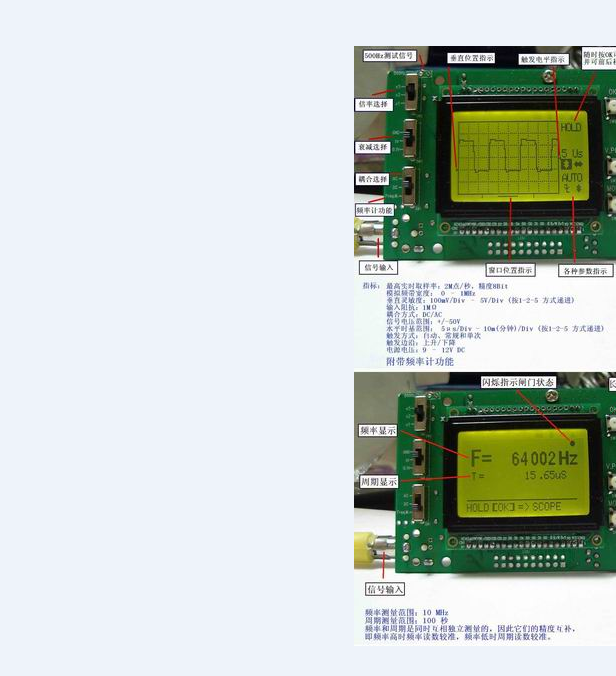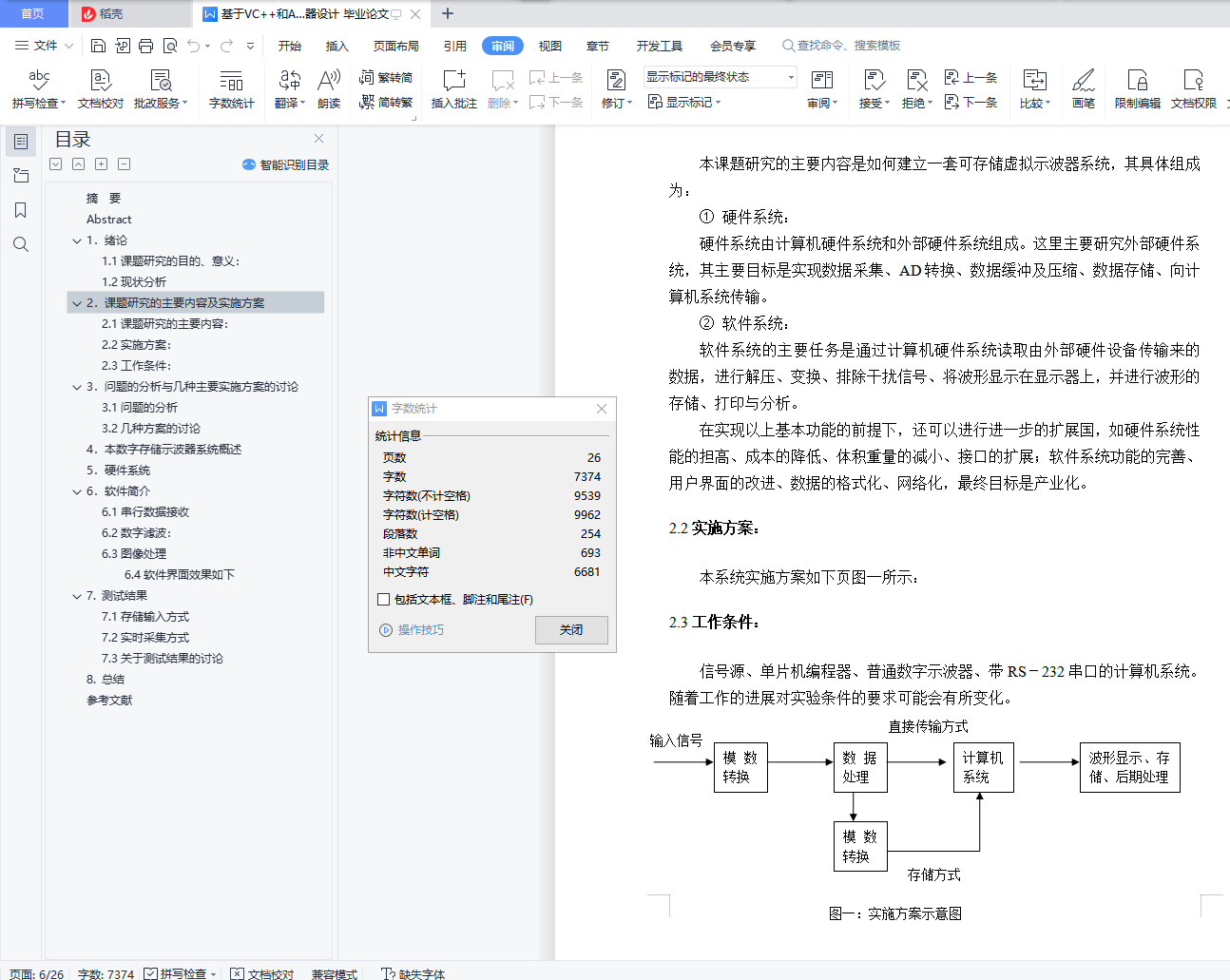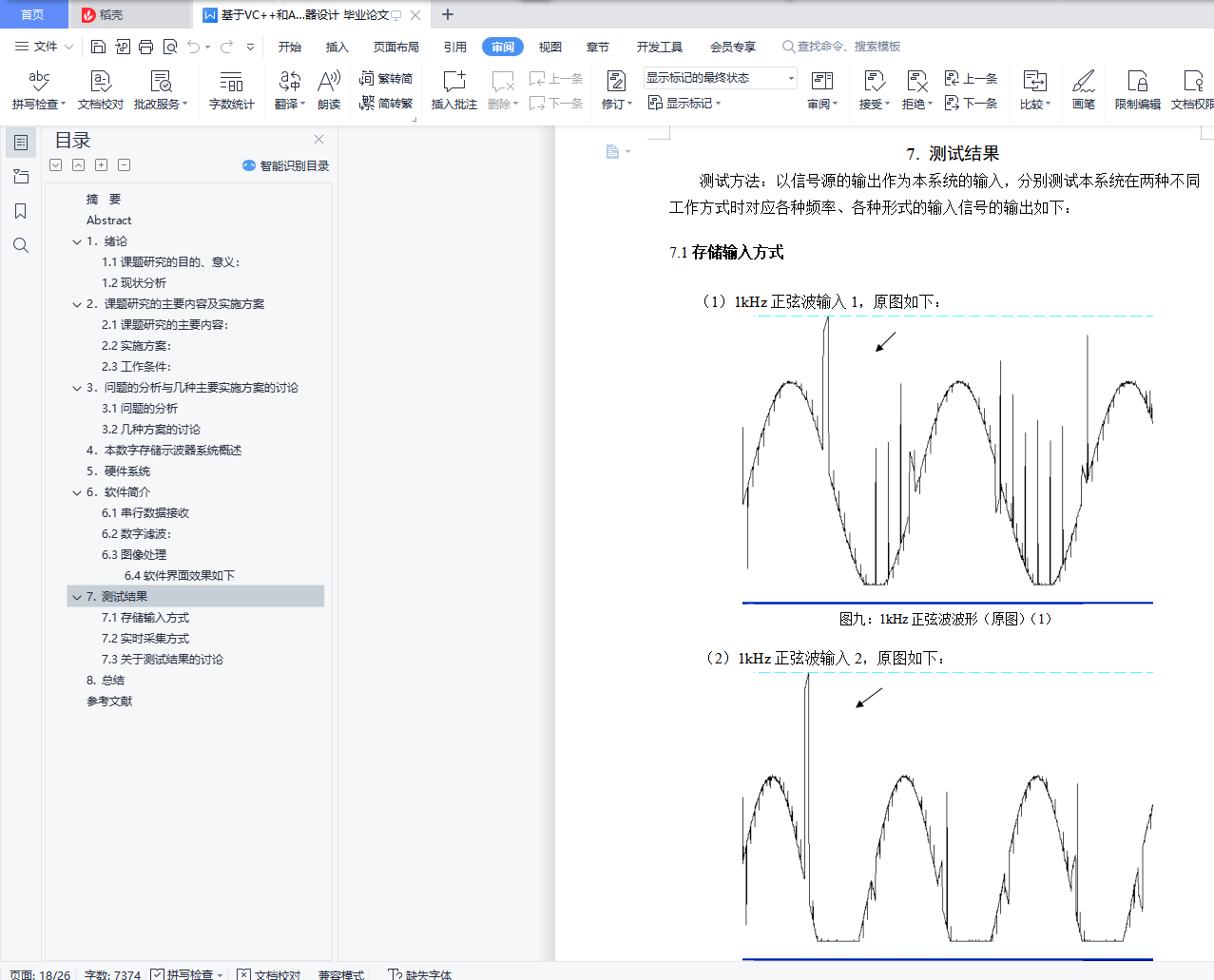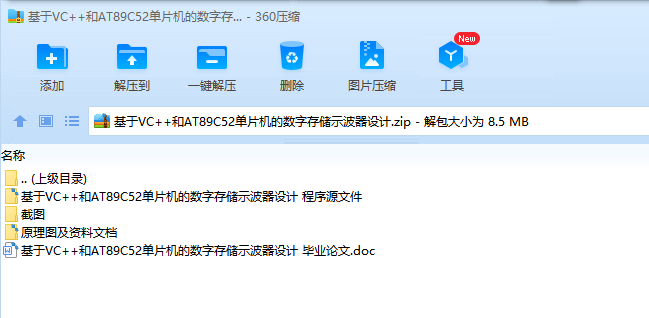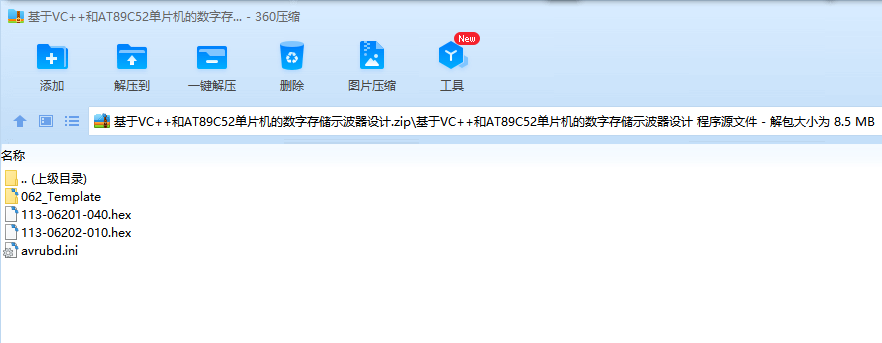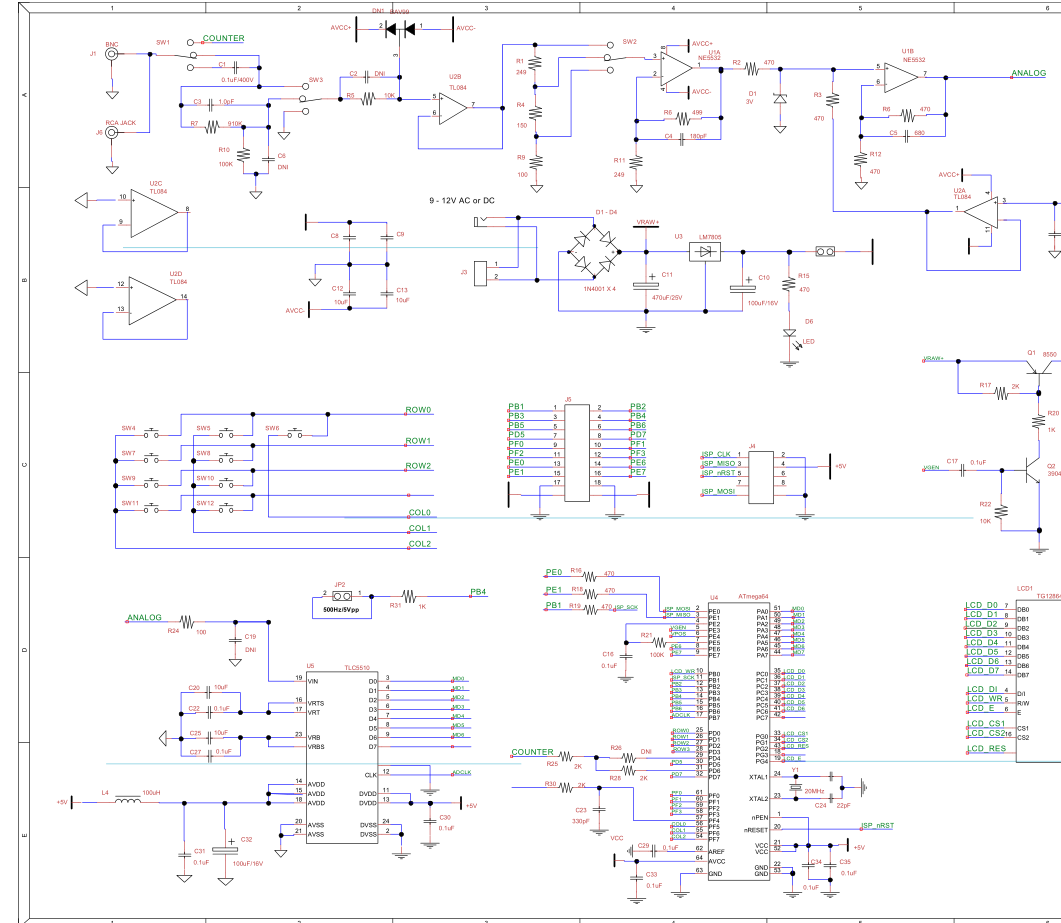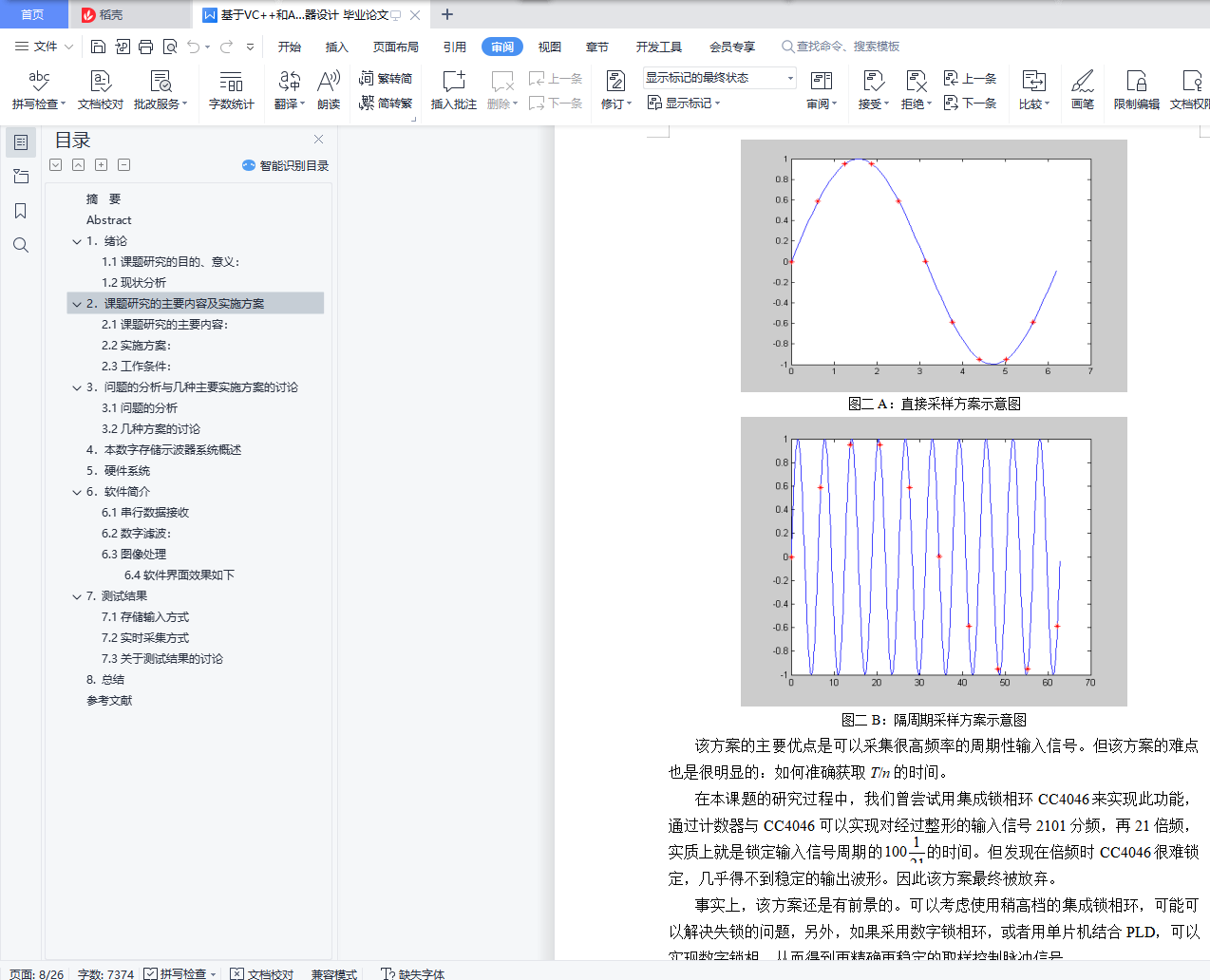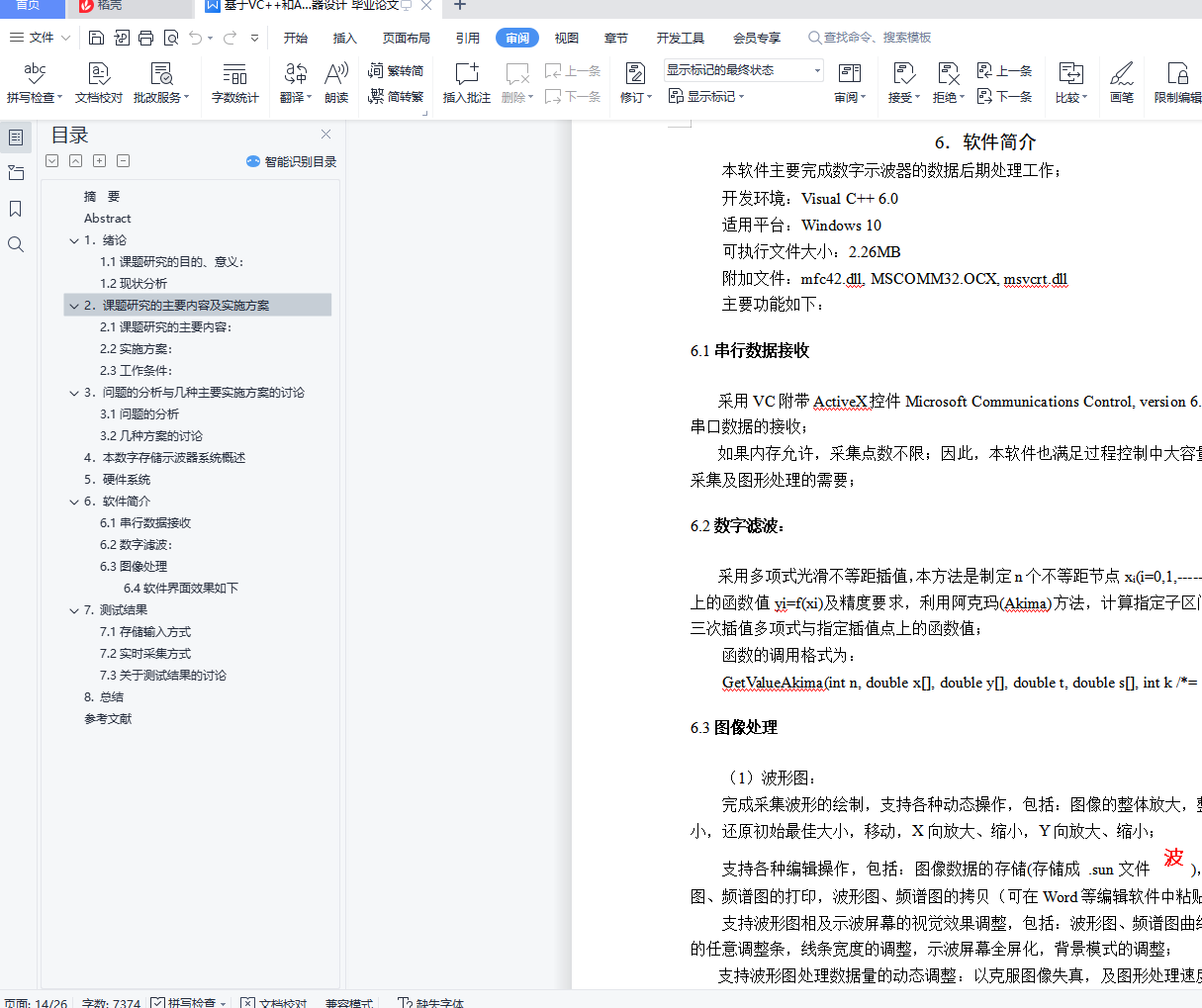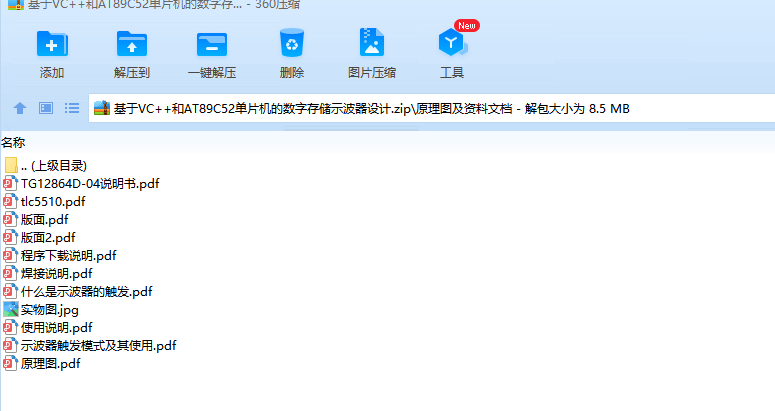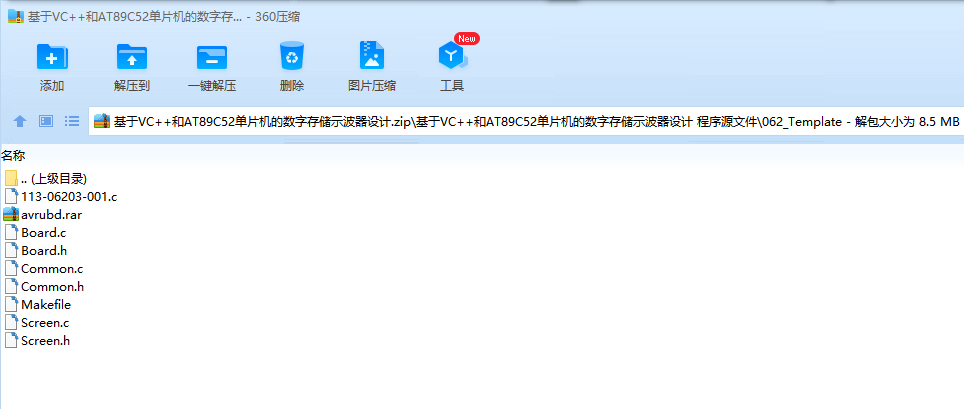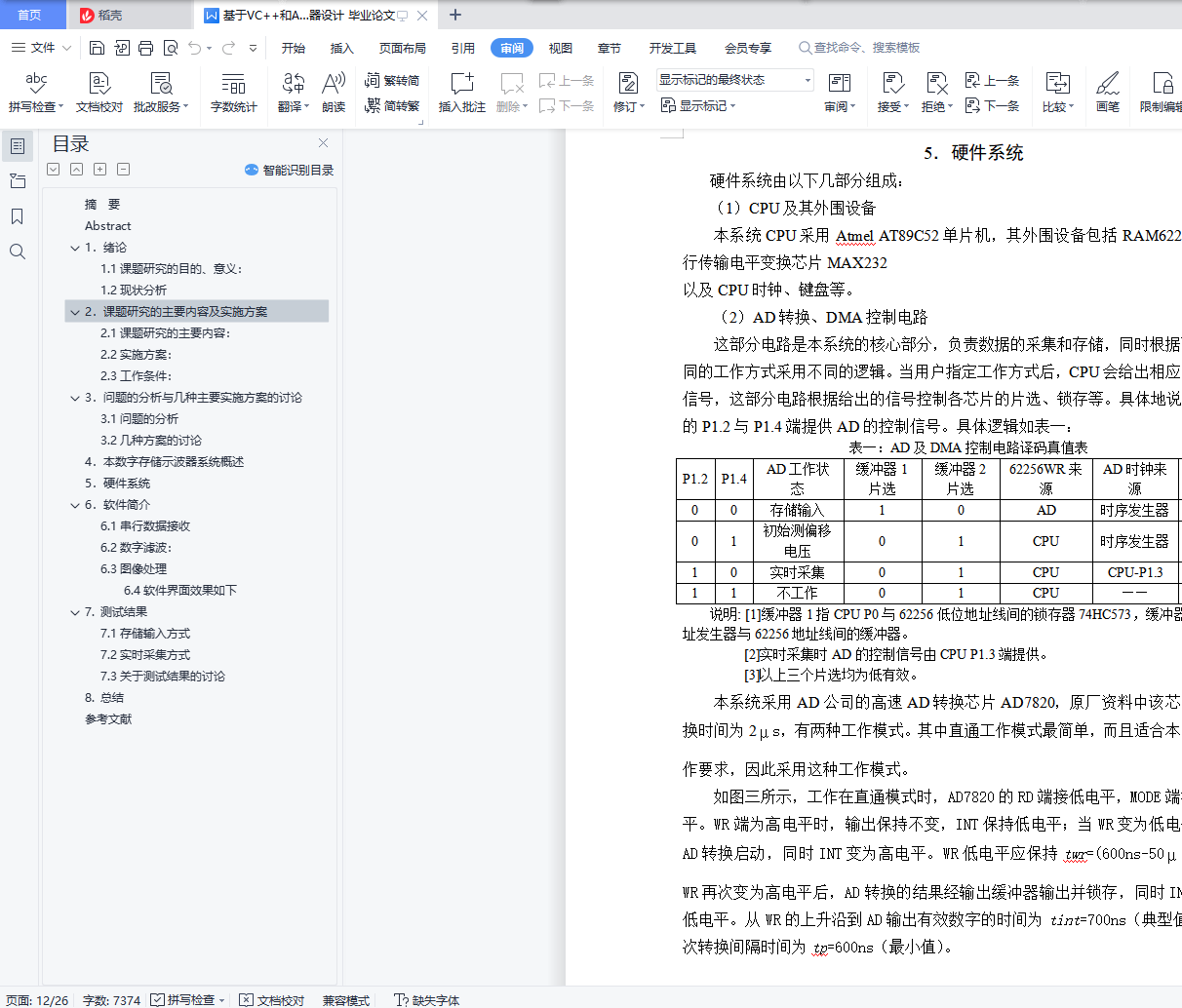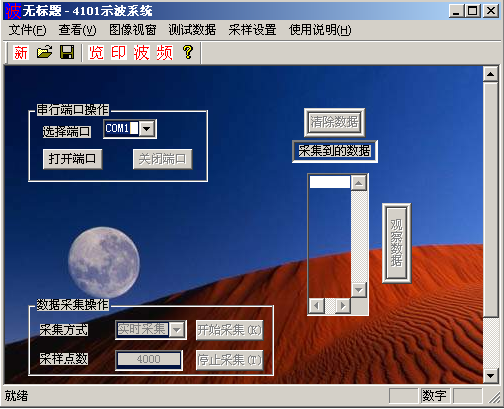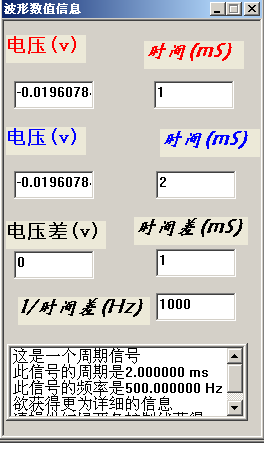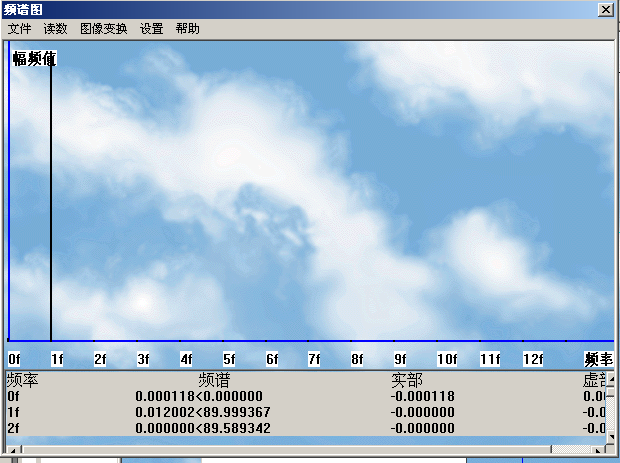摘 要
现代仪器正在向着智能化,便携式和虚拟化的方向发展.借助少许的采集硬件和通用PC平台,仪器正在由单一化向集成化,由物理仪器向虚拟仪器方向发展.虚拟仪器的发展必将推动现代仪器事业的发展. 示波器是现代测试中必不可少的电子仪器.
传统的示波器结构和功能上存在缺点,且大部分示波器基本上都是采集高频信号,用于低频信号测试精度又难以满足要求.本文针对以上问题,选择切比雪夫低通滤波器作为低通滤波模型,选择单片机PIC16F877作为数据采集单元,运用Proteus绘制了示波器各个模块的模拟和数字电路,运用VC++编程技术进行示波器软件设计,最终尝试开发了一种低频虚拟数字示波器.仿真结果证明,设计的示波器能够对20KHz以内低频信号的获取和显示,满足普通测试要求.具有结构简洁,操作方便,成本低廉的特点,且易于进行功能的扩展,拥有广阔的应用前景.
关键词:VC++;AT89C52;单片机;数字存储;示波器
Abstract
Modern instruments are developing in the direction of intelligent, portable and virtualization. With a little bit of collection hardware and a general PC platform, instruments are developing from single to integration, from physical to virtual instruments. The development of virtual instruments will promote the development of modern instruments. oscilloscope is an essential electronic instrument in modern testing.
Traditional oscilloscope structure and function of oscilloscope have disadvantages, and most oscilloscopes basically collect high frequency signals, which is used for low frequency signal test accuracy and difficult to meet the requirements. In view of the above problems, Chebyshev low-pass filter was selected as the low-pass filter model, single chip PIC16F877 was selected as the data acquisition unit, and drew the simulation and digital circuit of each oscilloscope with Proteus, and VC + + programming design for oscilloscope software. Finally, a low-frequency virtual digital oscilloscope was developed. Simulation results show that the designed oscilloscope can obtain and display the low-frequency signals within 20KHz, and meet the ordinary test requirements. With simple structure, convenient operation, low cost, and easy to expand the function, has a broad application prospect.
Key words: VC + +; AT89C52; MCU; digital storage; oscilloscope
目录
摘 要 I
Abstract II
1.绪论 1
1.1课题研究的目的、意义: 1
1.2现状分析 1
2.课题研究的主要内容及实施方案 2
2.1课题研究的主要内容: 2
2.2实施方案: 2
2.3工作条件: 2
3.问题的分析与几种主要实施方案的讨论 3
3.1问题的分析 3
3.2几种方案的讨论 3
4.本数字存储示波器系统概述 7
5.硬件系统 8
6.软件简介 10
6.1串行数据接收 10
6.2数字滤波: 10
6.3图像处理 10
6.4软件界面效果如下 11
7. 测试结果 14
7.1存储输入方式 14
7.2实时采集方式 16
7.3关于测试结果的讨论 20
8. 总结 21
参考文献 22
